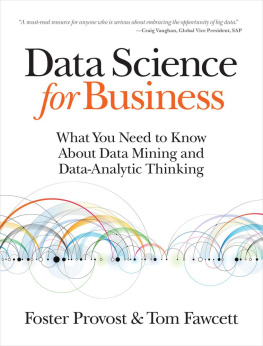PART ONE
The Power of Open Data
PART TWO
The Business Environment: New Trends in Open Data
CHAPTER ONE
An Opportunity as Big as the Web
IN NOVEMBER 2012 I WAS SITTING IN A PACKED CONFERENCE room at the brand-new Open Data Institute (ODI) in London, a public-private partnership launched with a 10-million-pound grant from the British government. The ODI has all the look and feel of a well-funded tech startup. The Institute is situated in Londons equivalent of Silicon Valley, known as Silicon Roundabout for the Old Street roundabout where the nearest tube station is. Its an area much like the tech hives in San Franciscos South of Market neighborhood or Silicon Alley in lower Manhattanunderdeveloped neighborhoods with ample space for new companies to stake out their territory, innovate like mad, and drive up the cost of real estate. While this international gathering happened to be in London, it could have been in either of those technology centers.
I was at the ODI with two dozen colleagues from business, government, and nonprofit organizations who had come together to talk about Open Datathe new movement to make large amounts of data available for public use. On this November Monday, we were in the second of two back-to-back meetings at the ODI, put together with funding from the MacArthur Foundation. We were meeting as representatives of the White House; 10 Downing Street; the U.K. governments Cabinet Office and its Department of Business Development; the World Bank; a major British retailer; two high-tech consulting firms; a leading tech publisher; university departments of law, computer science, artificial intelligence, physics, and cognitive neuroscience; two foundations; and nonprofits working on corporate transparency, civic engagement, and green business practices.
We were greeted by the Institutes CEO, Gavin Starks, an entrepreneur who has done Internet development for two decades in places as diverse as Virgin, Google, the British government, and UNICEF. He was making the provocative case that Open Data would have the same impact as the invention of the World Wide Web.
Open Data today, he said, is very much like the web was for me in 1994, when I was still trying to convince people that e-mail was a good thing or that they might want to launch a website. Everyone was excited about its potential, but no one knew quite what shape it would take. Over the last 20 years weve seen a lot of innovation, creativity, and disruption. Today, we dont know exactly where Open Data will lead, but we do know that it will be transformative. Some ways of doing business will start, some will evolve, and learning how to navigate that will be a challenge for all of us. But the potential that we saw in the early days of the web is what I see now with Open Data.
This isnt the first time a new tech development has been compared to the dawn of the web. But the leaders of the Open Data movement have the credentials to make that claim. The president and cofounder of the Open Data Institute is Sir Tim Berners-Lee, whose bio says, simply and accurately, that he invented the World Wide Web while at CERN, the European Particle Physics Laboratory. The ODIs chairman, Sir Nigel Shadbolt, is a pioneer in web science and artificial intelligence and was instrumental in creating the British governments Open Data policies. They are typical of the visionaries in the United States, the United Kingdom, and other countries who are developing Open Data now.
Open Data can best be described as accessible public data that people, companies, and organizations can use to launch new ventures, analyze patterns and trends, make data-driven decisions, and solve complex problems. Its very different from Big Datamore on that in a minutealthough the two overlap. Open Data is data with a mission: its designed to provide free, open, transparent data that can transform the way we do business, run government, and manage all kinds of transactions. Like our gathering at the ODI, the people behind Open Data are a diverse group, including leaders from the corporate world, technology, government, academia, nonprofits, and fields such as health, education, and environmental science.
The Open Data movement began with democratic goals, fueled by the idea that governments should make the data they collect available to the taxpayers whove paid to collect it. But in addition to its social benefits, Open Data has created tremendous new business opportunities, which are the focus of this book. Its worth remembering that the Internet itself began as a government-funded initiative, the ARPANET, created by the Advanced Research Projects Agency that President Eisenhower launched as a response to Sputnik. That government research project became one of the major economic drivers of our time. In a similar way, governments drive to release Open Data is creating a major economic resource and the infrastructure to manage it.
The Open Data policies developed by the U.S. and U.K. governments are driven by a push for economic growth and job creation. President Obama made this clear when he announced his administrations new Open Data Policy in May 2013. This policy, which will make unprecedented amounts of federal data available in highly usable forms, has a business agenda first and foremost. Significantly, the president didnt make his announcement at a Washington press conference or in the Rose Garden but on a visit to a technology center in Austin, Texas. There he promised that government Open Data is going to help launch new businesses of all kinds in ways that we havent even imagined yet.
The Open Data Policy includes a detailed description of the criteria for government data to be released as Open Data, drawing on work done by the Open Knowledge Foundation in the United Kingdom, the Washington-based Sunlight Foundation, and others. This book goes further: the Open Data Im writing about includes data from other sources as well as government.
I use Open Data to include data from any source thats made available in an open form that anyone can access and that meets a few specific conditions. All Open Data must be licensed in a way that allows for its reuse. It should be in a form that can be easily read by computers, although here there are gradations of openness. And theres general agreement that Open Data should be free of charge or cost just a minimal amount.
Open Data includes federal, state, and local data; scientific data released by researchers; data that companies release about their own operations; user reviews and tweets written by ordinary people; and any kind of data that can be found through Google or scraped from websites. By using these many kinds of Open Data:
Entrepreneurs are building new businesses that generate many millions of dollars in revenue. Open Data released by the National Oceanic and Atmospheric Administration beginning in the 1970s and GPS data released more recently spawned new industries that do billions of dollars in business each year. New businesses using open health data may soon match that, and opportunities in energy, finance, education, and other fields are increasing as well.
Governments are providing new, centralized data resources for business development. Data.gov, a website launched by the Obama administration, now makes hundreds of thousands of government datasets open and available for anyone to use for free. The United Kingdom has launched its own version, Data.gov.uk, and other countries are using a platform distributed by the United States as Data.gov in a box to start their own data hubs.
Companies are developing new marketing strategies, evaluating competitors and partners more accurately, and building their brands value. The new technique of


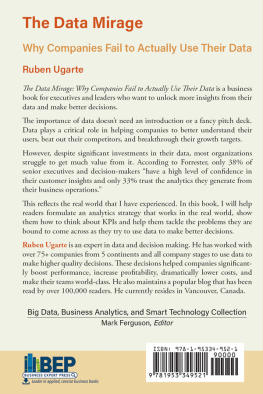
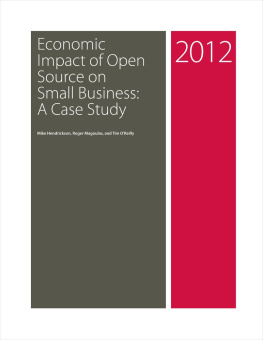
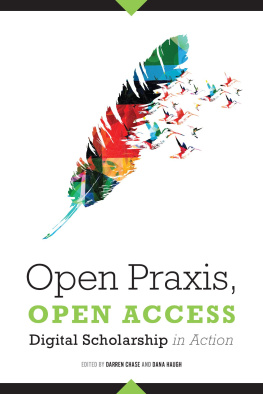
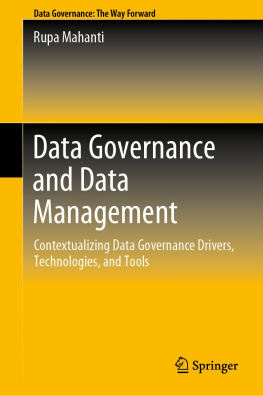
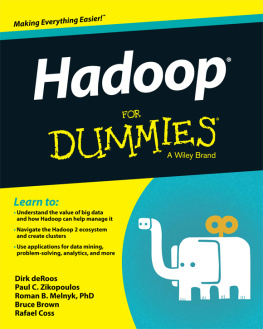
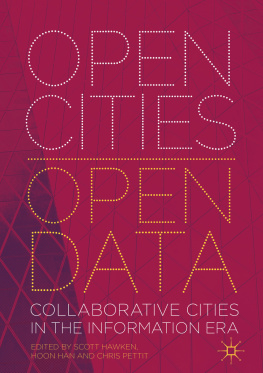
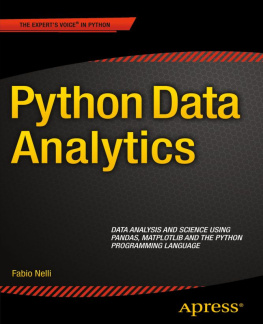
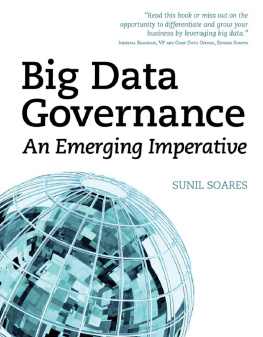
![EMC Education Services [EMC Education Services] - Data Science and Big Data Analytics: Discovering, Analyzing, Visualizing and Presenting Data](/uploads/posts/book/119625/thumbs/emc-education-services-emc-education-services.jpg)
